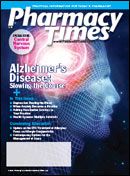Publication
Article
Pharmacy Times
Pharmacy Law: Overriding a Computer Alert Leads to Liability
Author(s):
Which of the involved parties should be held accountable when a pharmacist ignores a computer-generated alert and the patient subsequently dies?
Dr. Fink is professor of pharmacy law and policy at the University of Kentucky College of Pharmacy, Lexington.
Issue of the Case

When a pharmacist ignores a computer-generated warning about a potentialdrug?drug interaction, and the patientsubsequently dies from an overdose ofthe medication, how shall the liabilitybe shared among the various parties?
Facts of the Case
A patient in a southwestern staterequested a refill of his prescriptionfor tramadol at a chain pharmacy. Thenext day, he presented a prescriptionfor methadone at the same pharmacy.A computer alert was presented on thescreen for the pharmacist, based oninformation in the pharmacy chain'scomputer software database. Thisalerted the pharmacist to the potentialfor possible drug interactions. Thepharmacist did not counsel the patientabout this cautionary message.
In addition, evidence was presentedat trial that the pharmacist increasedthe methadone dosage without consultingthe prescribing physician.
The patient subsequently died fromthe effects of the toxicity of the 2 medications.
A wrongful death lawsuit was filed bythe 2 surviving children of the deceasedpatient, as well as his parents. Such alawsuit is a civil claim for causing thedeath of a person. These suits are filedby surviving relatives.
As a defense, the pharmacy chainargued that the principal cause of thepatient's death was the negligent prescribingdecisions of the physician andthe decision of the patient to leave thepharmacy without counseling by thepharmacist.
The Court's Ruling
The jury concluded that the failure ofthe pharmacist to warn the patient ofthe possible adverse consequences ofusing the 2 medications together wasthe principal cause of the patient'sdeath. The state where this case aroseuses the contemporary legal rule ofcomparative negligence?the jury is tosort out and assign blame or culpabilityin a fashion proportional to the causeof the damages. This comparative negligencerule replaced the traditionalrule of contributory negligence thatindicated that if the plaintiff contributedin some way, even a very minorway, to his or her own damages, therewas a total bar to recovery.
In this instance, the jury decided thatthe pharmacy chain was 97% to blame;the prescriber contributed to the damagesat a level of 2%; and the patienthimself was 1% to blame.
The jury verdict awarded $2 millionto each of the 2 surviving daughters ofthe deceased patient/plaintiff and $1million each to the surviving parentsof the plaintiff. Press reports indicatedthat this total $6-million verdict maywell be the largest ever in a civil lawsuitin the county where it was decided. Atthis writing, the case decision is beingappealed by the pharmacy chain.
The Court's Reasoning
Because this is a trial court decision bymembers of a jury, there is not nearlyas much background information availableas would be available if it werea case decided by a court of appealswhere the panel of judges hearing thecase would have written an opinion.Such an appellate court opinion typicallysupplies details about the factsand history of the case, as well as therationale used by the judges for theirdecision. Here, the jury reached a decisionfor which it was not required toprovide a written rationale.
First, it is important to emphasizethat such a wrongful death action filedby surviving relatives is based on theallegation that the negligent act of thedefendant caused the death, and thesurviving parties are entitled to recoverlegal damages as a result. This legaldoctrine is based on the reasoningthat the survivors have themselvesbeen damaged by no longer having thedeceased person in their lives.
Next, the role of the jury in apportioningblame cannot be overemphasized.In this case, the jurors clearlyconcluded that the acts of the pharmacistand employer were far and awaythe principal causes of the death.
Finally, a take-away message?dealingwith computer-generated alertmessages is something practitionersdo multiple times per day, using theirprofessional knowledge and judgmentand taking into account informationfrom a variety of sources to makean assessment. Whereas it certainlyis possible to be lulled into a routinewhen dealing with such matters, it isimportant to bear in mind that thesecomputer prompts are in place for areason?to protect the patient. Theybring into focus issues for professionaldecision making by the pharmacist.Following through by discussing therelevant information with the patientis an important professional responsibility.







